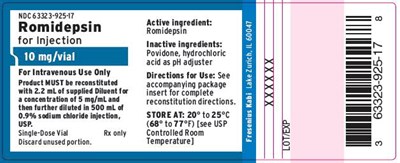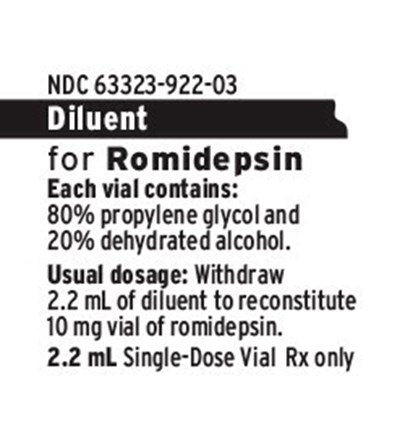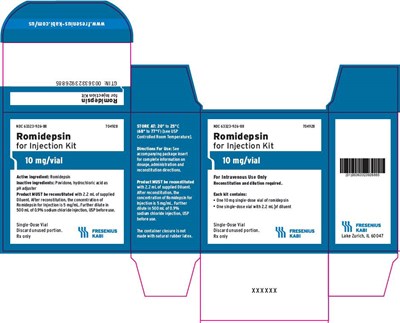Product Images Romidepsin
View Photos of Packaging, Labels & Appearance
Product Label Images
The following 6 images provide visual information about the product associated with Romidepsin NDC 63323-926 by Fresenius Kabi Usa, Llc, such as packaging, labeling, and the appearance of the drug itself. This resource could be helpful for medical professionals, pharmacists, and patients seeking to verify medication information and ensure they have the correct product.
rom02 0007 04

This is a product description for Romidepsin for Injection. It is available in 10 mg/vial and is for intravenous use only. The product must be reconstituted before use with a specified diluent and then further diluted in 500 mL of 0.9% sodium chloride injection. It comes in a single-dose vial, and any unused portion should be discarded. The active ingredient is Romidepsin, and the application instructions can be found in the accompanying package insert. The product should be stored at 20° to 25°C (68° to 77°F) in USP Controlled Room Temperature. Povidone and hydrochloric acid as pH adjuster are some of the inactive ingredients.*
rom02 0007 05

This is a medication called Romidepsin, which is available in a single-dose vial. The vial contains 10mg of Romidepsin and should be reconstituted with 2.2mL of diluent. The diluent is made up of 80% propylene glycol and 20% dehydrated alcohol. This medication is available only with a prescription.*
rom02 0007 06

This looks like a product description for the drug Romidepsin, which comes in a kit with a 10mg/vial concentration. The inactive ingredients include Povidone and a Hydrochloric acid adjuster, and it must be reconstituted with 2.2 mL of supplied Dluent. The container closure is not made with natural rubber latex. There are instructions for use provided in a package insert, but no further information is available in this text.*
* The product label images have been analyzed using a combination of traditional computing and machine learning techniques. It should be noted that the descriptions provided may not be entirely accurate as they are experimental in nature. Use the information in this page at your own discretion and risk.


